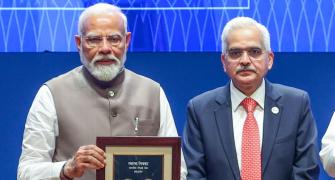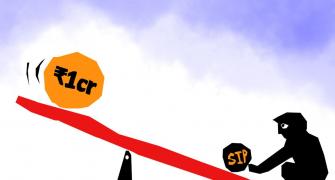The Kyoto Protocol -- an agreement for reducing greenhouse gas emissions that contribute to global warming -- came into force on Wednesday.
This presents India with a chance to emerge as a leading supplier of carbon credits to developed countries, which have to meet emission reduction targets. The United States and Australia have, however, chosen to stay out of the pact.
"Brazil, China and India have the greatest potential for the new mechanism. India has developed more Clean Development Mechanism methodologies and project proposals than any other country," a study in the UN Conference on Trade and Development journal said.
The KP, ratified by 140 countries, is aimed at reducing the greenhouse gas emissions of industrialised countries and could become an important source of new finance for projects in developing countries like India.
The CDM mandates binding emission targets for the industrialised nations to cut their collection emissions of six key greenhouse gases by at least 5.0 per cent on average over 2008-12, against their 1990 levels and allows them to acquire credits for emission reduction after implementing climate protection projects to which industrialised countries or private entities contribute financially.
The resulting credits or certified emission reductions are fully traded and can be used by private entities or governments to meet their domestic or international climate protection obligations.
At the current price of $6 for each tonne of carbon dioxide emission reduction, renewable energy projects could secure an additional revenue of about 15 to 20 paise for each unit of electricity that they produce, enhancing the project's rate of return by about 1 to 2 per cent, said an official release.
The increase in the project rate of return is much more substantial for waste to energy projects where the increase can be of 5 per cent or more because these projects collect the methane generated in landfills and burn it to produce electricity.
By reducing emissions of methane, which is 20 times more potent a greenhouse gas than carbon dioxide, the project secures a significant additional source of revenue, it added.
This increase makes it profitable for private investors to collect garbage and manage landfills -- which could have a major impact on the management of solid waste in our cities.
The ministry of environment and forests, has established an inter-ministerial committee to process and approve CDM project proposals before they are sent to an international CDM Executive Board in Bonn. The inter ministerial committee meets once a month, and has already approved 54 projects.
"The guidelines and procedures should be simplified to lower the transaction cost to encourage the Small Scale CDM project developers to avail the benefits of CER revenue stream. Additionally, the bundling approach should also be encouraged to lower the project specific transaction costs like validation, registration, verification and certification," said Dhirendra Kumar, Programme Officer, Winrock International.
The price of the CERs is market determined, and is expected to rise as the demand for CERs increases with the coming into force of the Kyoto Protocol.
The current price of CERs is about $ 6 for a tonne of carbon dioxide emission reductions, as against $ 5 a tonne last year. Most assessments predict that this price would rise to about $ 8 to $ 10 in about 3 to 5 years.







